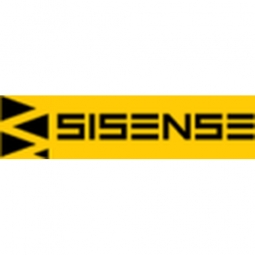
Technology Category
- Analytics & Modeling - Edge Analytics
- Platform as a Service (PaaS) - Application Development Platforms
Applicable Industries
- Buildings
- Cement
Applicable Functions
- Procurement
- Quality Assurance
Use Cases
- Building Automation & Control
- Intelligent Urban Water Supply Management
The Customer
Vitality
About The Customer
Vitality is a company founded by energy experts with the aim of making any building a smart building. The team at Vitality does this by aggregating and analyzing a property’s internet of things data to identify energy demand and savings, risk mitigation opportunities, and overall building health. By centralizing data from devices on meters, sprinklers, building automation systems, and more, Vitality’s building intelligence solution unifies all endpoint data in a single place. Its platform takes the guesswork out of building operations to help property managers reduce operating expenses, avoid costly damage, and optimize ROI while lowering overall energy consumption.
The Challenge
Vitality, a company focused on making buildings smart by analyzing IoT data for energy savings and risk mitigation, faced a significant challenge as it grew. The company's original plan involved building basic analytics into its platform. However, as the company expanded, customer demands for analytics quickly outpaced what Vitality could build in-house. The company realized it needed to purchase analytics capabilities to stay relevant to its customers. These capabilities needed to be seamlessly integrated into its proprietary platform, matching the look and feel of its software, and delivering an industry-leading user experience. Additionally, Vitality saw a huge potential for future growth by augmenting its powerful algorithms with industry-leading embedded analytics.
The Solution
To meet its growing needs, Vitality turned to Sisense for embedded analytics. Sisense provided a more efficient and cost-effective alternative to building analytics capabilities from scratch. It could be easily embedded into Vitality's core product and customized to match the look and feel of the existing software. This allowed Vitality to get to market much faster than if it had tried to build the capabilities itself. Sisense also enabled the Vitality team to quickly add value with pre-built features and open-source APIs that integrated seamlessly with the existing products. This allowed the Vitality team to remain focused on its own expertise: algorithms, measurement, and verification. Sisense's embedded analytics were integral to making Vitality’s platform enterprise-grade, empowering it to start winning big in new markets.
Operational Impact
Quantitative Benefit

Case Study missing?
Start adding your own!
Register with your work email and create a new case study profile for your business.
Related Case Studies.

Case Study
Energy Saving & Power Monitoring System
Recently a university in Taiwan was experiencing dramatic power usage increases due to its growing number of campus buildings and students. Aiming to analyze their power consumption and increase their power efficiency across 52 buildings, the university wanted to build a power management system utilizing web-based hardware and software. With these goals in mind, they contacted Advantech to help them develop their system and provide them with the means to save energy in the years to come.

Case Study
System 800xA at Indian Cement Plants
Chettinad Cement recognized that further efficiencies could be achieved in its cement manufacturing process. It looked to investing in comprehensive operational and control technologies to manage and derive productivity and energy efficiency gains from the assets on Line 2, their second plant in India.

Case Study
Intelligent Building Automation System and Energy Saving Solution
One of the most difficult problems facing the world is conserving energy in buildings. However, it is not easy to have a cost-effective solution to reduce energy usage in a building. One solution for saving energy is to implement an intelligent building automation system (BAS) which can be controlled according to its schedule. In Indonesia a large university with a five floor building and 22 classrooms wanted to save the amount of energy being used.

Case Study
Powering Smart Home Automation solutions with IoT for Energy conservation
Many industry leaders that offer Smart Energy Management products & solutions face challenges including:How to build a scalable platform that can automatically scale-up to on-board ‘n’ number of Smart home devicesData security, solution availability, and reliability are the other critical factors to deal withHow to create a robust common IoT platform that handles any kind of smart devicesHow to enable data management capabilities that would help in intelligent decision-making

Case Study
Commercial Building Automation Boosts Energy Efficiency
One of the challenges to building automation is the multitude of non-interoperable communications protocols that have evolved over the years. Buildings have several islands of automation. Bridging the islands of different automation without losing the considerable investment in each specialized control network is the main focus in this solution.




